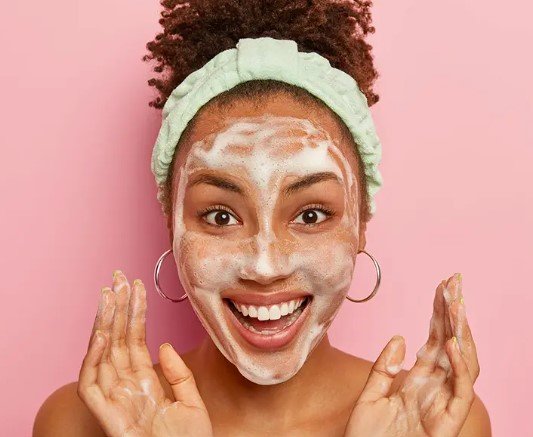Best Practices for Exfoliating Acne-Prone Skin: A Guide for Healthy Complexion
Summary
- Exfoliating acne-prone skin helps to prevent breakouts and maintain a healthy complexion by removing dead skin cells and unclogging pores.
- It is recommended to exfoliate acne-prone skin 2-3 times a week with gentle exfoliants to avoid irritation and inflammation.
- Choosing the right exfoliant and incorporating it into your daily skin care routine can help improve the overall appearance and health of your skin.
Introduction
Exfoliating acne-prone skin is an essential step in any skincare routine to prevent breakouts and maintain a healthy complexion. However, it can be challenging to determine how often you should exfoliate without causing irritation or exacerbating existing skin issues. In this article, we will delve into the best practices for exfoliating acne-prone skin and how to incorporate it into your daily skincare routine.
Why is exfoliation important for acne-prone skin?
Exfoliation is crucial for acne-prone skin because it helps to remove dead skin cells, unclog pores, and prevent breakouts. When dead skin cells accumulate on the surface of the skin, they can mix with sebum and bacteria, leading to clogged pores and acne flare-ups. By exfoliating regularly, you can slough off these dead skin cells and promote cell turnover, resulting in clearer, healthier skin.
The benefits of exfoliating acne-prone skin include:
- Unclogging pores and preventing breakouts
- Improving skin texture and tone
- Enhancing the absorption of Skincare Products
How often should you exfoliate acne-prone skin?
When it comes to exfoliating acne-prone skin, moderation is key. Exfoliating too often can strip the skin of its natural oils, leading to irritation and inflammation, while not exfoliating enough can result in clogged pores and breakouts. The recommended frequency for exfoliating acne-prone skin is 2-3 times a week, depending on your skin's sensitivity and tolerance levels.
Tips for exfoliating acne-prone skin:
- Choose gentle exfoliants with small, round particles to avoid micro-tears in the skin.
- Avoid harsh physical exfoliants, such as scrubs with large particles or rough textures.
- Consider Chemical exfoliants, such as AHAs or BHAs, which can help to dissolve dead skin cells without causing irritation.
Incorporating exfoliation into your daily skincare routine
To maintain a healthy complexion and prevent breakouts, it's essential to incorporate exfoliation into your daily skincare routine. Here are some tips for seamlessly integrating exfoliation into your skincare regimen:
Step 1: Cleanse your skin
Start by cleansing your skin with a gentle, non-comedogenic cleanser to remove any dirt, oil, or makeup. This will help to prepare your skin for exfoliation and ensure that the exfoliant can penetrate effectively.
Step 2: Exfoliate 2-3 times a week
After cleansing, apply a small amount of exfoliant to damp skin and gently massage in circular motions. Avoid scrubbing too vigorously, as this can irritate the skin. Rinse off the exfoliant with lukewarm water and follow up with a hydrating toner.
Step 3: Moisturize and protect
Finish your skincare routine with a lightweight, non-comedogenic moisturizer to hydrate and protect the skin. If you're exfoliating in the morning, don't forget to apply sunscreen to prevent sun damage and maintain the health of your skin.
Conclusion
Exfoliating acne-prone skin is an essential step in any skincare routine to prevent breakouts and maintain a healthy complexion. By exfoliating 2-3 times a week with gentle exfoliants and incorporating it into your daily skincare routine, you can improve the overall appearance and health of your skin. Remember to listen to your skin's needs and adjust your exfoliation frequency accordingly to achieve the best results.

Disclaimer: The content provided on this blog is for informational purposes only, reflecting the personal opinions and insights of the author(s) on the topics. The information provided should not be used for diagnosing or treating a health problem or disease, and those seeking personal medical advice should consult with a licensed physician. Always seek the advice of your doctor or other qualified health provider regarding a medical condition. Never disregard professional medical advice or delay in seeking it because of something you have read on this website. If you think you may have a medical emergency, call 911 or go to the nearest emergency room immediately. No physician-patient relationship is created by this web site or its use. No contributors to this web site make any representations, express or implied, with respect to the information provided herein or to its use. While we strive to share accurate and up-to-date information, we cannot guarantee the completeness, reliability, or accuracy of the content. The blog may also include links to external websites and resources for the convenience of our readers. Please note that linking to other sites does not imply endorsement of their content, practices, or services by us. Readers should use their discretion and judgment while exploring any external links and resources mentioned on this blog. Content in this blog is copyright protected, please do not repost or embed content without prior written permission.